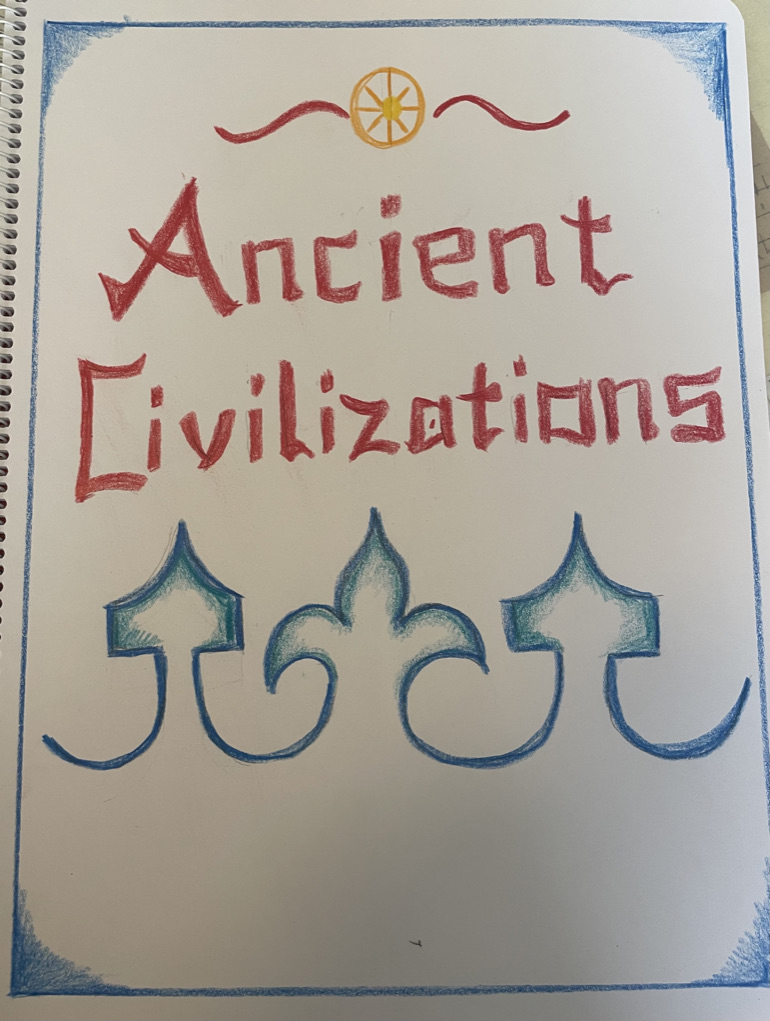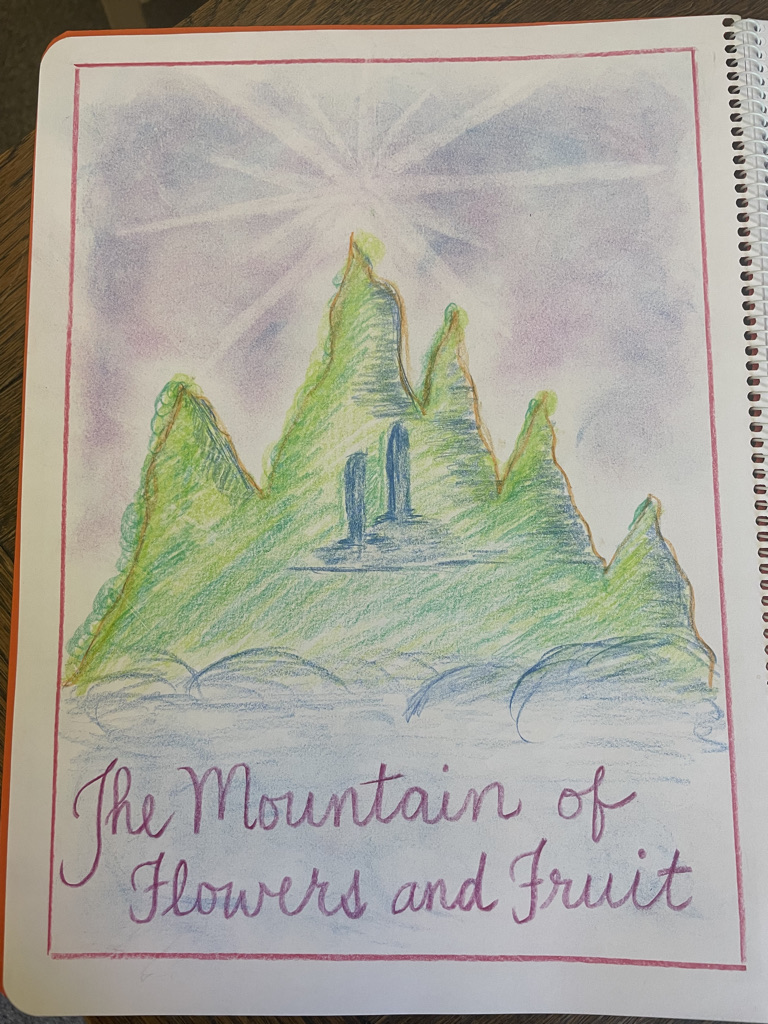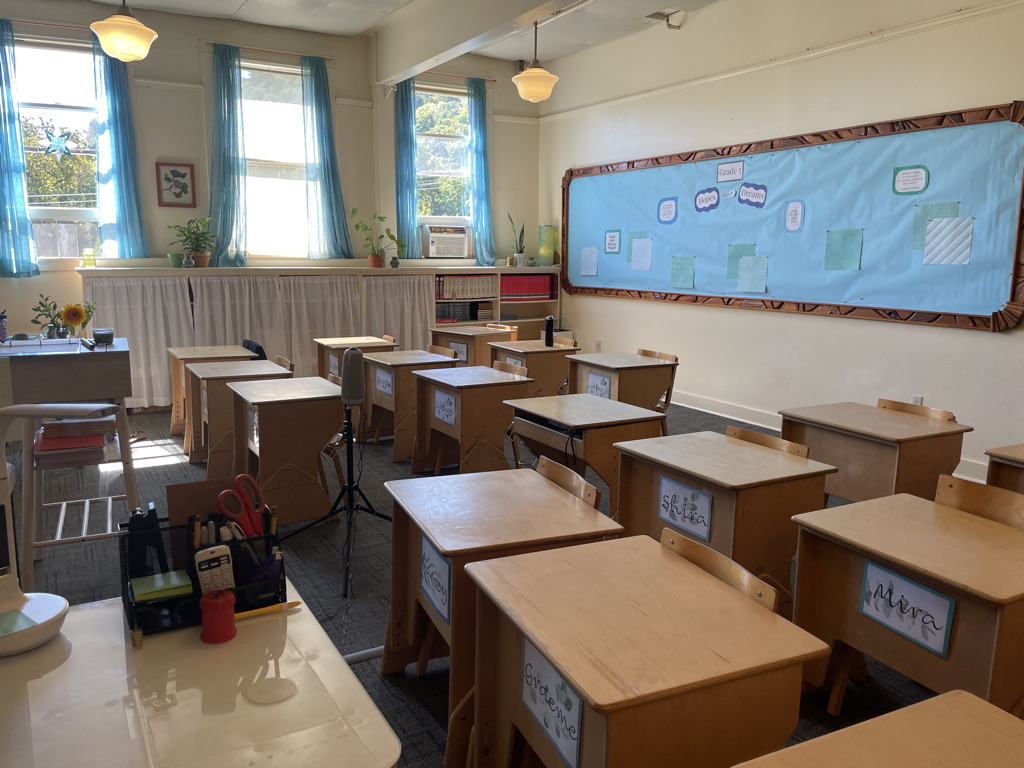Well, we just finished the second week of school, which is about the time when summer starts feeling like a distant memory. But it’s all good. We’re in that rosy time when it feels SO good to be back in the classroom and things are going pretty darn well.
Starting the Year Off Right
I always give a lot of thought to which block will be the first of the year. I’ve started things off different ways in the now four(!) times I’ve taught fifth grade.
Starting with Botany
A couple of times I have started the year off with a Botany block. I was somewhat inclined to do that again this time but I changed my mind at the last minute because some of my students are starting the year off online (I’ll write a post about that at some point.) I decided to put the Botany block off in the hopes that more of my students will be in-person by then and we can do a bunch of hands-on, fun stuff.
But Botany is a great way to start the year. The weather is good enough in September that you can get outside and do some drawing, harvesting and observation of plants. And in general, I try to put those more outward-facing blocks on the ends of the school year. I usually close out the year with a Botany block, as well.
Starting with Ancient Civilizations
If you’re not worried about making the most of the warm weather or getting lots of hands-on, outdoor projects going at the beginning of the year, Ancient Civilizations is another great way to start fifth grade.

I really like kicking off the year with the history/mythology content. Starting with those stories gives you a good chance to set the tone for the year and give the students a feeling sense for the theme of the year from the very beginning.
Starting with a good story-telling block is also a great way to start the year off with good classroom behavior structures and routines. I’m finding this particularly helpful this year, after having been away from the traditional classroom for so long. More than a few of my students need regular reminders of school behavior expectations. This is absolutely to be expected and I consider it a standard part of the work I do with my students.
A good history/mythology block usually follows your typical routines and habits — listening to stories, completing main lesson pages, participating in verbal reviews of those stories — and I’m so grateful that my students are getting a reminder of how those things work best. I think if I’d started off the year with a big hands-on, outward-focused block, I’d be facing some behavior challenges and they’d have a harder time making the most of the block and then readjusting to typical classroom routines later on.
So, yay for me for deciding to start with Ancient Civilizations.
Why Ancient Civilizations in Waldorf Grade 5?
One of the things I love most about the Waldorf curriculum is how intentional it is about each aspect of the curriculum and how it meets the child of that age. This is no less true for Ancient Civilizations in fifth grade.
Up until now, the students have been hearing stories from the world of mythology. These stories are the truer-than-true stories that have lived in the oral traditions of their people. In fifth grade, they’ll start the year hearing those mythological stories, but by the end of the year we’ll move into the realm of actual history.
To prepare the students for this shift, we will show them, through these various cultures, how human beings came to make the earth their home. Each one of the cultures we’ll study this year brings the human being closer to feeling at home on the earth. Here’s a very brief picture of how each culture does that.
India. To the ancient Indian, the world was Maya. What we call the real world, they considered an illusion. They felt that the true real world was the heavenly existence of the spirit. In this way, the ancient Indian hardly touched the earth. They tread lightly and were happily inclined to return to the spirit world, however possible. The story of Buddha (though he comes from a later time period) brings a strong picture of this desire to escape the realm of earthly existence.
Persia. The ancient Persians came closer to making the earth their home. They represent the shift from a nomadic life to domesticating animals and growing crops. They had to act upon the world to make it suitable to inhabit, in a way that the ancient Indians did not. This is in part because of the differences in climate between the two regions. With wide fluctuations in temperature throughout the year, Persia is a more difficult place to make a life.
Mesopotamia. We’re covering this civilization in our next history block in January, but it continues to follow the stream of earthly incarnation. In Mesopotamia, the people developed cities and a system of laws that formed agreements between people living in community. The engineering required to build the walls and structures of a city demonstrates a further step towards making the earth a comfortable home. The story of Gilgamesh is a significant one that shows how far humans were feeling from the world of spirit. Gilgamesh’s quest was to find everlasting life. The last thing he wanted was to return to the spirit world.
Egypt. The last of the four civilizations traditionally studied in fifth grade is Egypt. The ancient Egyptians thought so highly of earthly existence that they wanted to bring it with them into the afterlife. Though it seems that they were obsessed with the idea of the afterlife (as seen in their elaborate tombs and pyramids) all of this attention was an effort to extend their earthly incarnation and bring it with them into the afterlife.
Now, of course, not all of this is explicitly articulated to the students. If you read an anthroposophical perspective of this journey, a belief in reincarnation and the spiritual world is pretty baked in. My goal is to present the stories so that they are accessible to students, no matter what their family’s beliefs might be. We can still talk about people learning to make the earth a comfortable place to live without assuming any particular belief.
At the end of the year we’ll conclude our mythology/history studies with a unit on Ancient Greece. In the past I’ve done a unit on Greek Mythology and a separate unit on Greek History. This year I’m putting them back to back so we can be immersed in the world of Greece for six full weeks.
Structure of the Block
Every year I find the history/mythology curriculum to be the most difficult content to get through. There are just so many fantastic stories to tell and I always feel compelled to do justice to each of the cultures we study. Inevitably, though, I find myself falling short, wishing I’d covered more. (This is, incidentally, why you’ll find so few history/mythology curriculum guides on my site. I just don’t feel like I’ve done them well enough yet! But I remain hopeful!).
But, I’ve started off the block with a pretty good outline (though it is a little more pinched than I’d hoped) and I’m determined to stick with it. Here’s a week-by-week overview of what it looks like.
- Week #1 (3 days): The Monkey King/Journey to the West
- Week #2 (4 days): The Monkey King/Journey to the West
- Week #3: Ancient India — Overview, the gods, Sons of Pandu
- Week #4: Ancient India — The Ramayana
- Week #5: Ancient India — Buddha and Ancient Persia
The one adjustment I might make is on week three. It’s a bit light and I might try to start The Ramayana at the end of that week, allowing for a full week on Persia.
The Monkey King/Journey to the West
I started off the year with these stories and I’m really enjoying them. They come from China and they have such a fun and lighthearted feeling. The Monkey King is a trickster character, a bit like Loki, so it makes sense to bring it at the beginning of the year, before diving into the more reverent content of the other cultures.

My students are thoroughly enjoying the stories and I think they’ll be sad to bid Monkey a fond farewell after Monday this week. If you want to read more about how I’ve been preparing these stories, you can read more on my Substack site. (This is where I post a bit more informally with weekly posts for subscribers that give a more journal-like experience.)
Ancient India
My summer planning time was definitely cut short this year, so I’ll be spending a good chunk of this weekend putting together my plan for the week. Thankfully 5th grade is familiar territory, so I have a good sense for the resources and stories that I might tell.
Overview, The Gods and Sons of Pandu
This coming week we’ll be diving into the India content and for this week my primary resource will be Charles Kovacs’ Ancient Mythologies. I like that his stories bring some of the basic facts about India in picturesque story form. Through these stories we’ll learn about:
- the holy River Ganges
- the Indian gods
- the climate
- the caste system
I’m realizing now, though, that I did not slot in the stories of Krishna, which are some of my favorites (from this fun resource). Hopefully we’ll have some time in this week to touch on those stories.
The Ramayana
I’m excited to devote a full week to these stories and I’ve got a couple of resources I’m turning to. First, I will read through the Kovacs story, though it is just twelve pages for this epic story. So it might present a good overview, but probably not enough detail for storytelling.
I was also recommended a book titled Sita by Devdutt Pattanaik. I plan to sit down with it this weekend. I also remember using this version by Krishna Dharma, though I no longer own it, so I can’t really attest to it. I’ll probably see what I can find at the library, as well.
I do like to start with a few different resources and look through them all before settling on one. My preference is definitely to find a good young adult or middle grade reader, though lately I’ve had to turn to adult books and sift through them to find the essence of the stories.
Buddha
My hands-down favorite resource for Buddha is the biography called Buddha by Deepak Chopra. I love this book so much, though it’s another one of those adult books that will give you a good background heading into the block. It’s not really an open-and-go book to read to students. (Incidentally, I was excited for 6th grade when I saw that Chopra has written similar books for Jesus and Mohammed. I gave them both a try and didn’t love them as much as the Buddha book.) Kovacs has a story about Buddha, but again, it doesn’t feel like it’s enough to provide content for storytelling. (Though if you’re covering India in just one week, as was recommended in my teaching training, then you might be grateful for the short version that Kovacs provides.)

Ancient Persia
I’ve always found Persia to be the culture that gets overlooked the most, and honestly, when it’s paired up with India, it’s easy to do. The main gist of Ancient Persia is that it brought humans the capacity to use fire and it is a land of great contrasts. Those contrasts come through most dramatically through the story of Ahura Mazda and Ahriman. As long as I get to that one, and the fire-filled story of Zarathustra, then I’ll feel satisfied. I plan to use Kovacs for these stories.
We’ll end this block with Ancient Persia before moving on to Botany in October. Hopefully I’ll be back with an update of some of the work we did!




Leave a Reply